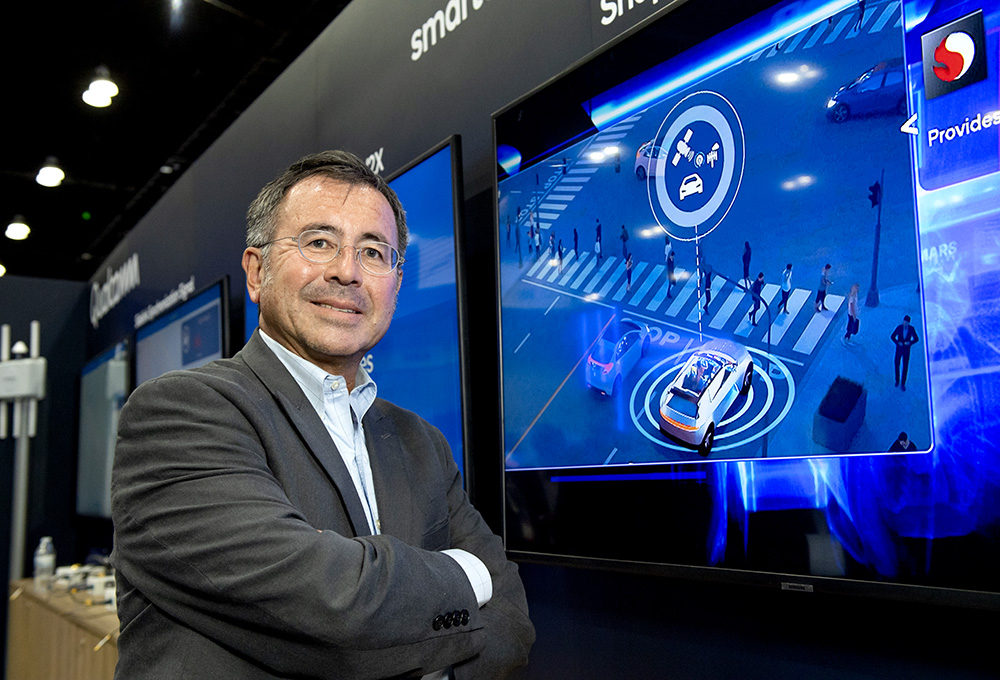
Called sidelink synchronization signal (SLSS), the technology is being demoed at ITS World Congress and will be presented by Qualcomm to SAE International next week as a way to formally start the standardisation process.
“There’s no way that C-V2X should be cut off as you go through a tunnel,” said Jim Misener, Qualcomm’s global V2X ecosystem lead. “We’re helping to bridge the gap and make sure people are able to communicate hazards and work zones as vehicles make their approach. This will reduce road incidents and potentially save lives.”
Qualcomm’s SLSS demo shows a car traveling through the Lincoln Tunnel connecting New Jersey to New York City. As it progresses past GNSS coverage, the vehicle receives a SLSS C-V2X enabled notification that there is a work zone ahead. A timer counts down the distance and time to collision – information that can be acted upon by an autonomous driving system or manually by a driver.
According to Misener, the technology can also be used for autonomous valet parking and other V2X applications where GNSS signals are not available.
Booth 1647














